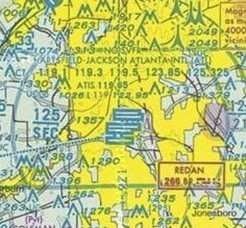Initiative Is Part Of NextGen Air Traffic Control Modernization
Program
Acting Federal Aviation Administrator Michael Huerta and
aviation partners kicked off a collaborative effort Wednesday to
make air traffic control more efficient, help airlines improve
on-time performance, and reduce emissions generated by aircraft
flying in and out of airports in the Atlanta and Charlotte, NC,
areas.

“The Federal Aviation Administration and aviation industry
are teaming up to make some of the busiest airspace in the world
also the most efficient,” Huerta (pictured) said.
“The end result for travelers will be fewer delays, quicker
flights and an even safer, greener flying experience.”
As part of the FAA’s NextGen modernization program, the
Metroplex initiative – which includes the optimization of
airspace procedures in the metroplex – will improve the flow
of air traffic into and out of all airports in the Atlanta and
Charlotte metropolitan areas. A metroplex is a region with several
airports serving major metropolitan areas where heavy airport
activity and environmental constraints combine to hinder the
efficient movement of air traffic. Metroplex initiatives are
underway or planned in 21 metropolitan areas across the
country.
The Metroplex initiative is based on satellite navigation, which
the FAA calls Performance-Based Navigation (PBN), also a key
component of NextGen. PBN enables pilots to fly aircraft using
radar or satellite coverage, or by utilizing the on-board flight
management system. PBN allows shorter, more direct routes that
reduce flight time and fuel consumption, and result in fewer carbon
emissions. "Delta is committed to working with key stakeholders to
design and implement efficient procedures that benefit our
customers and the communities surrounding the Atlanta
Metroplex,” said Steve Dickson, Delta Senior Vice
President–Flight Operations. Delta applauds efforts that
through technology allow us to reduce our environmental impact
setting the stage for the evolution to NextGen.”
Atlanta Sectional

The FAA estimates that 1.2 million fewer nautical miles will be
flown in and out of Atlanta, based on current flight plan miles
filed. This equates to 2.9 million fewer gallons of fuel used and a
reduction in carbon emissions by 30,000 metric tons. For Charlotte,
an estimated 2.5 million fewer nautical miles will be flown
annually, based on current flight plan miles filed. 3.7 million
gallons of fuel will be saved, with reduced carbon emissions by
35,000 metric tons annually. “US Airways is committed to
continually evaluating the ways we do business and how our business
impacts the environment and the communities we serve,” said
Robert Isom, US Airways’ Chief Operating Officer.
“Optimizing the airspace at our largest hub at Charlotte
Douglas International Airport, where we operate more than 630
flights each day, will help us reduce our carbon emissions by up to
59,000 metric tons each year and save up to $17 million annually on
fuel costs."
Launched Wednesday, this collaborative, regional partnership
includes the FAA, the National Air Traffic Controllers Association,
Delta Air Lines, US Airways, and Atlanta and Charlotte-area
airports. “Atlanta is fortunate to have such a strong team
working on the Metroplex project. Through collaboration with
management, NATCA and industry," said Jeffrey D. Russell, National
Air Traffic Controllers Association lead representative on the
team. “I expect our team to deliver a phenomenal product to
the users of the airspace system and air travelers, who will
benefit greatly from these efforts to make our system even safer
and more efficient."
The Metroplex work teams will explore and develop strategies to
streamline airspace over Atlanta and Charlotte to help reduce
airspace complexity for air traffic controllers and flight crews.
The strategies include:
- Creating separate high-altitude flight tracks for Atlanta
departures and Charlotte arrivals to allow aircraft to climb and
descend without leveling off.
- Expanding Optimized Profile Descent (OPD) procedures into
Atlanta and Charlotte airports. OPDs allow pilots to almost idle
the engines while the aircraft descends, using the on-board Flight
Management System to fly a continuous, descending path without
leveling off. OPDs reduce fuel consumption, carbon emissions and
noise
- Shortening flight tracks by making them more direct.
- Designing new satellite-based procedures for Atlanta reliever
airports with air traffic control towers, which are
DeKalb-Peachtree Airport, Gwinnett County Airport/Briscoe Field,
Fulton County Airport and Cobb County Airport/McCollum Field.
- Creating separate flight tracks for flights arriving at Atlanta
reliever airports, to separate them from flights to Hartsfield
Jackson Atlanta International Airport.
- Developing routes that will enable general aviation traffic to
fly across the Atlanta and Charlotte metro areas while remaining
clear of controlled airspace.
- Designing new satellite-based procedures for air carrier
airports near Charlotte, including Greensboro and Raleigh-Durham,
N.C., and Greenville- Spartanburg and Columbia, S.C.
- Raising the ceiling of airspace handled by the FAA Terminal
Radar Approach control at Charlotte Douglas International Airport
to 16,000 feet from 14,000 feet to facilitate OPDs.
Charlotte, NC Sectional

 ANN's Daily Aero-Linx (04.15.24)
ANN's Daily Aero-Linx (04.15.24) Classic Aero-TV: 'No Other Options' -- The Israeli Air Force's Danny Shapira
Classic Aero-TV: 'No Other Options' -- The Israeli Air Force's Danny Shapira Aero-News: Quote of the Day (04.15.24)
Aero-News: Quote of the Day (04.15.24) Airborne 04.16.24: RV Update, Affordable Flying Expo, Diamond Lil
Airborne 04.16.24: RV Update, Affordable Flying Expo, Diamond Lil ANN's Daily Aero-Term (04.16.24): Chart Supplement US
ANN's Daily Aero-Term (04.16.24): Chart Supplement US





